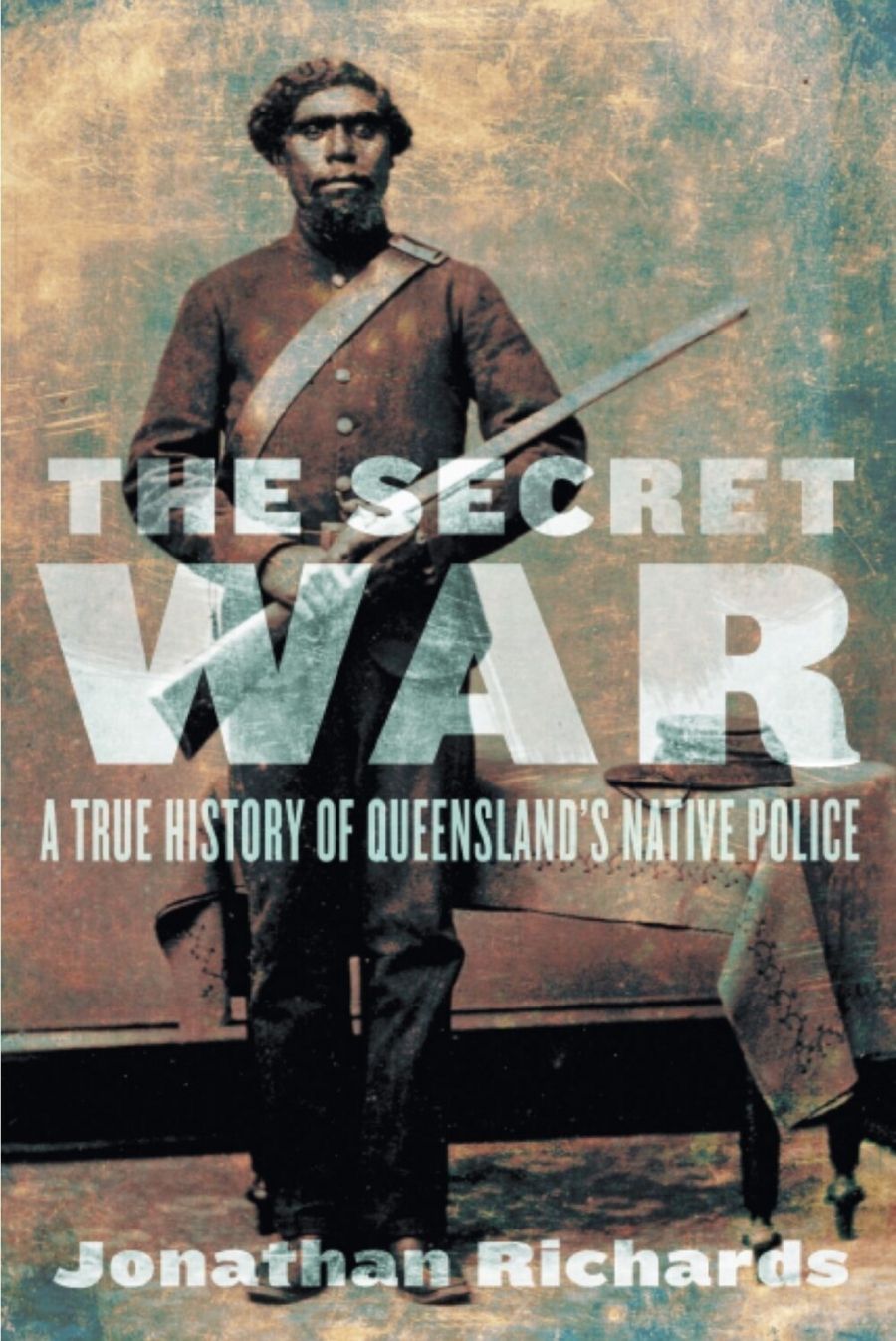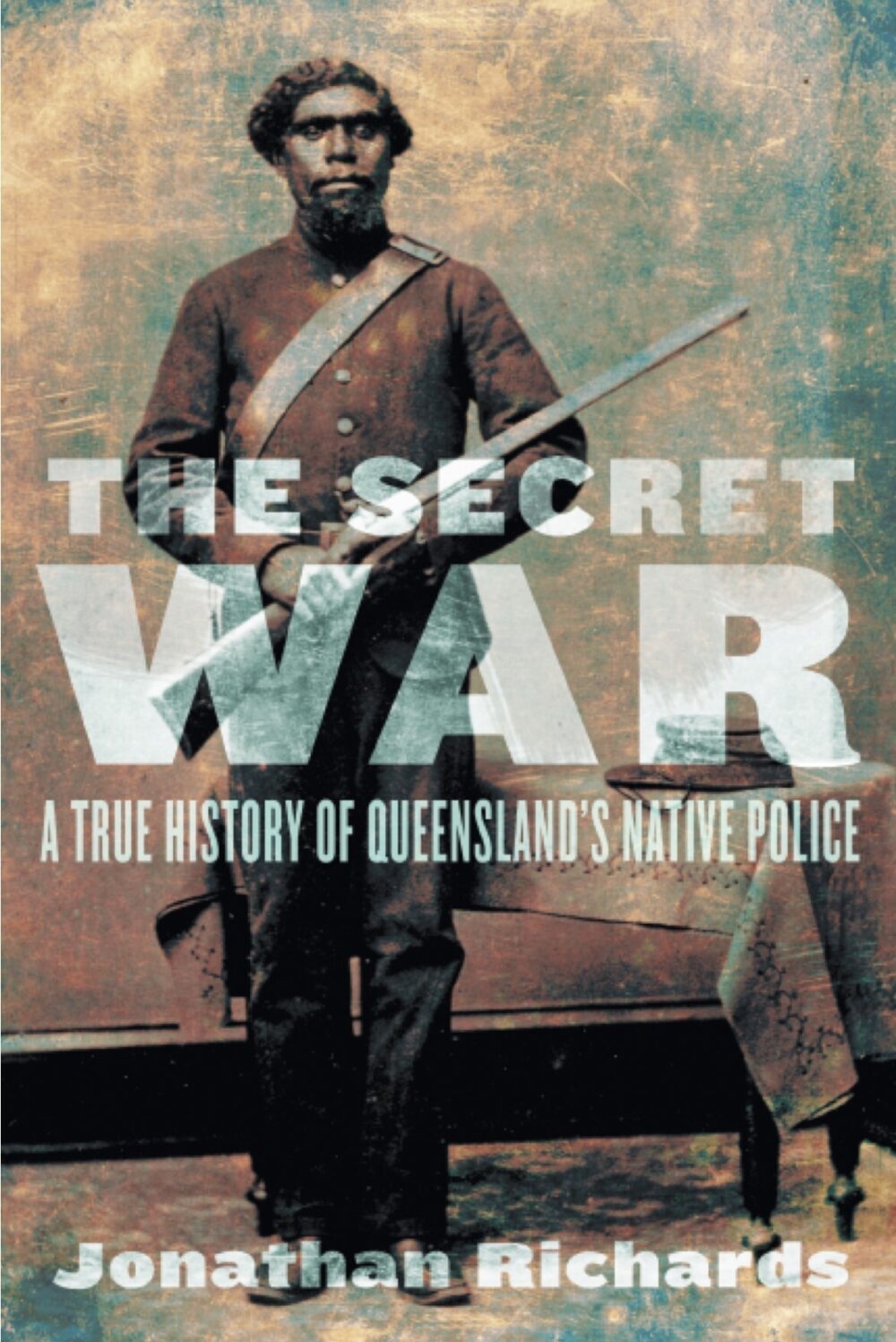
- Free Article: No
- Contents Category: Australian History
- Custom Article Title: Secret war business
- Review Article: Yes
- Article Title: Secret war business
- Online Only: No
- Custom Highlight Text:
In Queensland, as in the other Australian colonies in the nineteenth century, European settlers wrested control of the land from its indigenous owners by force and the threat of force. All colonies used police for this purpose, but Queensland went further than any other in creating a police corps specifically for the subjugation and dispossession of the Aborigines. Queensland’s Native Police comprised small units of indigenous troopers, commanded by European officers. These were moved around the colony to wherever on the leading edges of European expansion the Aborigines were most ‘troublesome’. Their tactics were simple and brutal. Whether the targets were entire Aboriginal groups or individual suspects, their standard strategy was lethal force in engagements that were known euphemistically as ‘dispersals’.
- Book 1 Title: The Secret War
- Book 1 Subtitle: A true history of Queensland's Native Police
- Book 1 Biblio: UQP, $39.95 pb, 308 pp
- Book 1 Cover Small (400 x 600):

- Book 1 Cover (800 x 1200):

Inferring the bigger picture from incomplete evidence is necessary in instances such as this, for the Native Police operated on, and often beyond, the margins of legality. Ostensibly a civil agency of law enforcement, it was effectively a paramilitary force of colonial conquest. Consequently, the Queensland authorities did their best to avoid public – or imperial – scrutiny of Native Police operations. As Richards puts it: ‘Secret war business depended on discretion’; and official discretion inevitably produced gaps in the records, paper trails that end inconclusively, cover-ups and falsifications. He explains how the colonial authorities became entangled in a web of duplicity, unable, at least until late in the nineteenth century, to either abandon or officially acknowledge its murderous policies toward Aborigines. The ‘secret’ of Richards’ title, however, is not to be taken literally. His own evidence shows the actions of the Native Police to have been an open secret; almost all colonial Queenslanders knew what the police did, but most preferred to maintain a discreet silence, so the appalling but (from a coloniser’s perspective) necessary business of subjugation could continue.
Richards sometimes labours the point. He tells us, not once but half a dozen times, that the exact death toll at the hands of the Native Police can never be known. Yet he still suggests that a close approximation to an accurate body count is somehow important. I fail to see why. Early in the book he makes the far more pertinent point that terror was the Native Police’s fundamental tactic. The effectiveness of terror tactics depends not on body counts but on the demonstrable capacity of the terrorising group to inflict violence upon its victims. This, Richards clearly shows, the Native Police could and did do, not quite with impunity but with little restraint.
On the other hand, Richards sometimes alludes to issues that demand further elucidation. Several times he refers in passing to changes in the character of the Native Police and in governmental attitudes toward frontier violence from around the mid-1880s; some of his tables also suggest that some significant changes occurred around this time. Yet nowhere does Richards clearly spell out what those changes were or what motivated them. Similarly, he makes insufficient effort to engage with the questions of why Aborigines joined the Native Police, remained in it and participated in its bloody operations. Some troopers, he remarks, were recruited at gunpoint; Queenslanders, like colonists elsewhere, used the time-honoured tactic of divide and rule. The claims may well be true, but they do not get to the nub of the question of indigenous motivations for their participation in the dirty and dangerous work at the sharp end of empire-building. Non-indigenous scholars are perhaps too reticent to delve into questions of indigenous peoples’ motivations. The problem with that assumption is that it inevitably produces a lopsidedness of analysis, less attentive to the agency of indigenous peoples than to that of their colonisers.
Richards devotes his final chapter to ‘the question of genocide’. Several historians, including Alison Palmer and Dirk Moses, have argued that Queensland’s Native Police did engage in state-sponsored genocide. Richards is more circumspect. Acknowledging that colonial Queensland governments acted with callous disregard for Aboriginal lives and well-being, he admits that his long and intensive investigations have failed to uncover proof of genocidal intentions on the part of those governments. ‘Genocide’, he claims, is ‘an inadequate word’, and the United Nations’ definition ‘too narrow to allow the term to stick’ in the case of colonial Queensland. Therefore, he argues, ‘we need some other terminology’ to describe accurately the actions and intentions of the Native Police. I agree, although ‘some other terminology’ does not necessitate a neologism. ‘Subjugation by terror’ aptly expresses the tenor and tactics of the Native Police. Richards has here produced a fine exposition of how that process of subjugation was enacted in the social and political milieu of colonial Queensland.


Comments powered by CComment